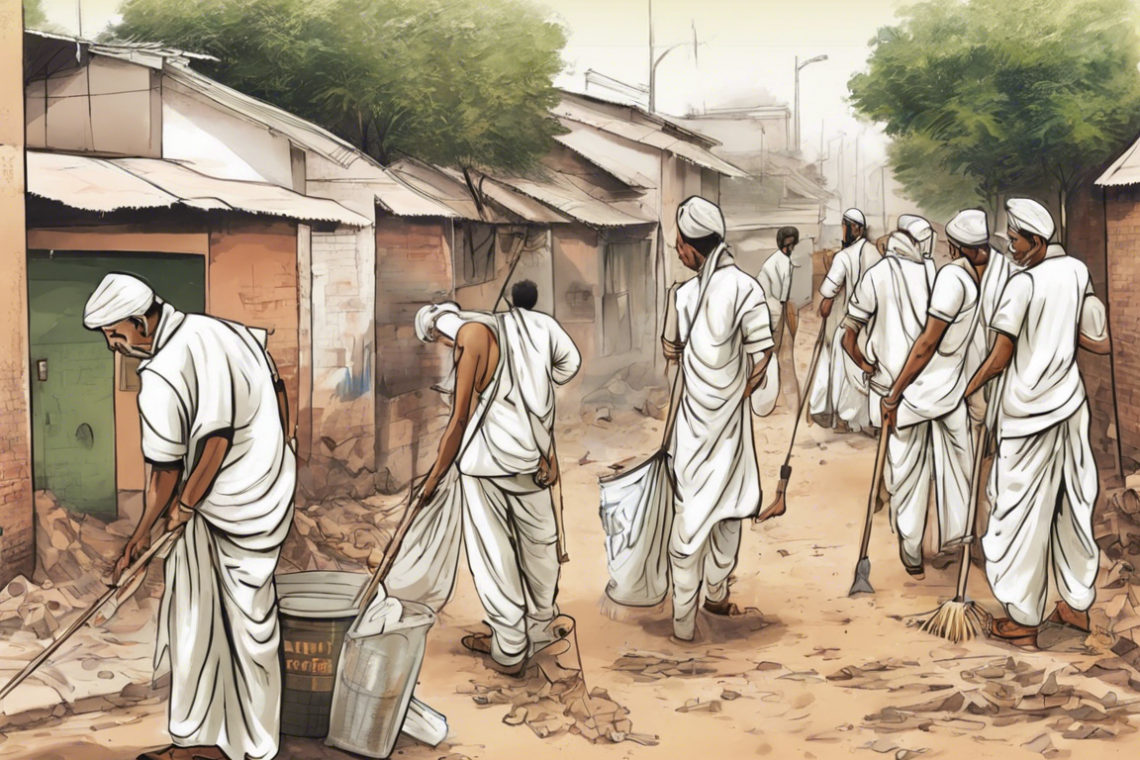
Introduction
Swachh Bharat Abhiyan is a nationwide cleanliness campaign initiated by the Government of India in 2014. The campaign aims to make India clean and open defecation free by October 2, 2019, in honor of the 150th birth anniversary of Mahatma Gandhi. Swachh Bharat Abhiyan has become one of the largest cleanliness drives in the world, engaging millions of citizens in improving sanitation and hygiene practices across the country.
Objectives of Swachh Bharat Abhiyan
The main objectives of the Swachh Bharat Abhiyan include:
1. Open Defecation Free (ODF) India: To eradicate the practice of open defecation and ensure that every household has access to a toilet.
2. Solid and Liquid Waste Management: To promote proper waste management practices, including segregation of waste at source, recycling, and proper disposal of waste.
3. Behaviour Change: To promote a cleanliness and hygiene mindset among individuals and communities, encouraging them to take responsibility for their surroundings.
4. Infrastructure Development: To build adequate sanitation infrastructure such as toilets, waste treatment plants, and drainage systems in both rural and urban areas.
5. Cleanliness in Public Spaces: To ensure cleanliness in public places like streets, parks, and tourist spots through regular maintenance and monitoring.
Swachh Bharat Abhiyan has made significant progress towards achieving these objectives, but there is still work to be done to ensure a clean and sustainable environment for all Indians.
Challenges Faced
While Swachh Bharat Abhiyan has seen considerable success over the years, several challenges still persist:
1. Behavioural Change: Changing deep-rooted habits and attitudes towards cleanliness is a major challenge, requiring continuous awareness campaigns and education.
2. Infrastructure Gaps: There is a need for more public toilets, waste treatment facilities, and drainage systems, especially in rural areas.
3. Open Defecation: Despite efforts to eradicate open defecation, some communities still practice it due to a lack of awareness or access to sanitation facilities.
4. Waste Management: Proper waste management practices need to be implemented at all levels to reduce environmental pollution and health hazards.
5. Sustainability: Ensuring the sustainability of cleanliness initiatives is crucial for long-term success and impact.
Impact of Swachh Bharat Abhiyan
Since its inception, Swachh Bharat Abhiyan has had a significant impact on India’s cleanliness and sanitation landscape:
-
Increase in Toilet Coverage: The campaign has led to a substantial increase in toilet coverage, with millions of households gaining access to clean and safe sanitation facilities.
-
Reduction in Open Defecation: The practice of open defecation has seen a noticeable decline, especially in rural areas, contributing to improved health outcomes and environmental hygiene.
-
Awareness and Behaviour Change: Swachh Bharat Abhiyan has raised awareness about the importance of cleanliness and hygiene, motivating individuals and communities to adopt better sanitary practices.
-
Infrastructure Development: Significant progress has been made in building sanitation infrastructure, including public toilets, waste treatment plants, and drainage systems, improving overall cleanliness levels.
-
Recognition and Awards: The success of the campaign has garnered international recognition and awards, showcasing India’s commitment to achieving cleanliness and sustainability goals.
Future Directions
As Swachh Bharat Abhiyan enters its next phase, there are several areas that require focus and attention:
1. Sustained Behaviour Change: Continued efforts are needed to sustain the behavioural change towards cleanliness and hygiene practices among all sections of society.
2. Addressing Infrastructure Gaps: The government should work towards bridging infrastructure gaps by investing in sanitation facilities and waste management systems in underserved areas.
3. Community Participation: Involving local communities and NGOs in cleanliness initiatives can enhance community ownership and sustainability of cleanliness efforts.
4. Monitoring and Evaluation: Regular monitoring and evaluation of Swachh Bharat Abhiyan projects can help track progress, identify challenges, and implement corrective measures effectively.
Conclusion
Swachh Bharat Abhiyan is not just a campaign; it is a movement towards a cleaner, healthier, and more sustainable India. While challenges remain, the progress made so far highlights the determination and dedication of the government and citizens towards achieving clean India goals. By fostering a culture of cleanliness and hygiene, India can pave the way for a brighter and more prosperous future for all its citizens.
FAQs
1. What is Swachh Bharat Abhiyan?
Swachh Bharat Abhiyan is a nationwide cleanliness campaign launched by the Government of India in 2014 to promote sanitation, hygiene, and cleanliness.
2. What are the objectives of Swachh Bharat Abhiyan?
The main objectives of the campaign include achieving Open Defecation Free India, promoting solid and liquid waste management, fostering behaviour change towards cleanliness, developing sanitation infrastructure, and ensuring cleanliness in public spaces.
3. What are the key achievements of Swachh Bharat Abhiyan?
Swachh Bharat Abhiyan has led to an increase in toilet coverage, a reduction in open defecation, awareness about cleanliness and hygiene, infrastructure development, and international recognition through awards.
4. What are the challenges faced by Swachh Bharat Abhiyan?
Challenges include changing behavioural attitudes towards cleanliness, addressing infrastructure gaps, eliminating open defecation, implementing effective waste management practices, and ensuring the sustainability of cleanliness initiatives.
5. How can individuals contribute to Swachh Bharat Abhiyan?
Individuals can contribute by maintaining personal hygiene, avoiding open defecation, segregating waste at source, using dustbins, participating in cleanliness drives, and spreading awareness about sanitation and hygiene practices.
